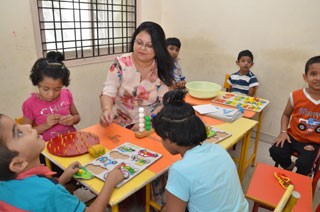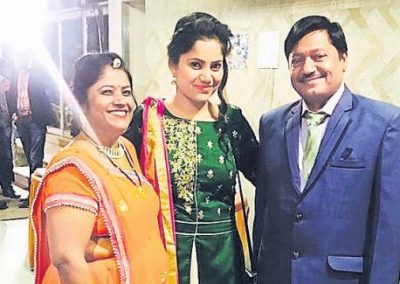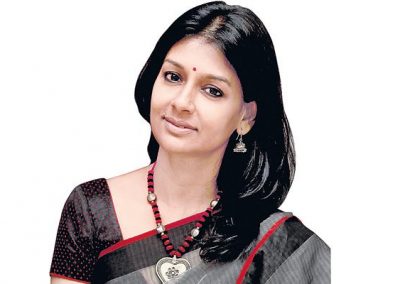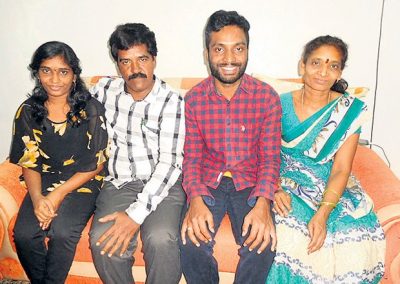He was born into a poor Malayali Poduval family hailing from Payyanur and was one among eight siblings. She was from a well-to-do Malayali family who had settled in Malaysia. They came from opposite worlds, but Bharatanatyam brought them together and forged an unbreakable bond.
Today, VP Dhananjayan and Shanta Dhananjayan are recognised as one of the most legendary ‘natya’ couples in India, with a long, illustrious career spanning more than five decades.
VP Dhananjayan’s father was a schoolteacher, who staged amateur plays, and he grew up watching his father travel from village to village. A chance encounter with Guru Chandu Panicker, who was assigned the task of finding a male dancer by Rukmini Devi Arundale, the co-founder of Kalakshetra, led to Dhananjayan being initiated into the school in 1953 at the age of 14, on a scholarship.
This was where he met Shanta, the woman who would play an important role in his life. Shanta Dhananjayan had been raised in Malaysia, where she grew up dancing and singing. A child prodigy, her parents, recognized her potential, and at the age of eight, enrolled her in Kalakshetra in 1952, where she studied Bharatanatyam, Kathakali, and Carnatic music.
“Our first performance together was Rukmini Devi’s Seeta Swayamvaram Naatya Natakam, which we performed in 1956 in a school auditorium in Coimbatore,” says Dhananjayan.
Shanta adds, “During rehearsals we could sit a little apart, but on stage we had to share a small stool together, and that was a little embarrassing for me. Later, we got used to it.
When he was 18, he made his feelings known, but she moved to Malaysia in 1962 and began teaching natya, leaving him in suspense. He initially thought that his lower economic status was the problem, but when marriage proposals started coming her way, she began turning them down. Her parents, realising that her love for Dhananjayan was true, gave the couple their blessing, and the couple got married in 1966 at the Guruvayoor temple in Kerala.
They left Kalakshetra in the late 1960s, wanting to carve a career for themselves, in a dance scene that was dominated by the wealthy. For dancers who had not yet been established, this proved to be one of their biggest challenges. Dhananjayan, who happened to have a degree in Economics, got a clerical job so that he could support both his wife and his family back home in Kerala. In the evenings he would return home to teach dance, in a humble room with a thatched roof.
What the Dhananjayans brought to Bharatanatyam were innovative ideas, and unique productions, combining male and female dance principles in specially conceived duets, known for their perfection, and attention to detail.
They created new pieces, apart from the standard; Dhananjayan’s Natyaanjali replaced the traditional Alarippu, and the couple’s Nrutyopahahaaram, danced to music composed by a contemporary musician, became an item which they were known for. These were just some of the many original ideas that are part of their vast repertoire.
Gradually, they started gaining a following, and more students began to join them, wanting to be trained under their expert guidance.
Their partnership is one of rare understanding, and they dance with vitality and charisma born of years of training and passion for the arts, one of the main reasons they received international acclaim and have performed on hundreds of stages across the world!
Today, in over 50 years of dancing together, the couple has performed all over India, from the Rashtrapati Bhavan to the Khajuraho Festival, and have received several awards and accolades, including the Padma Bhushan and the Sangeet Natak Academy Award. The couple, however, cherishes the comments they receive after a performance, more than the awards.
Dance, or natya, as the couple prefer, is a profession and art that they cannot imagine life without.
“We have been breathing natya ever since we were children. Our life has been around natya only, and it will continue to forever,” they say.
Shanta answers, explaining, “We have achieved a great deal in propagating, preserving and popularising Bharatanatyam, but I still wish to build a grand theatre suitable for our performing arts, and continue to work towards the same. Though Chennai is a cultural city and has been recognised by the UNESCO, it lacks proper venues suitable for Bharatanatyam.”








